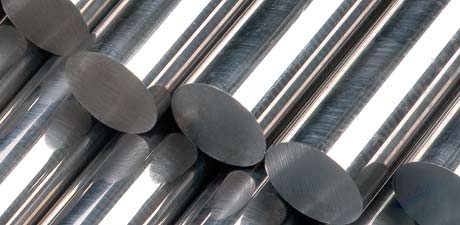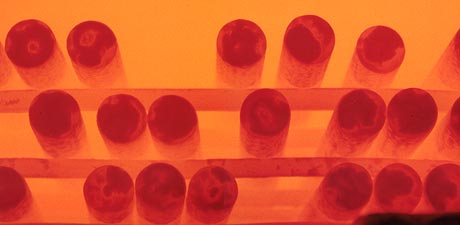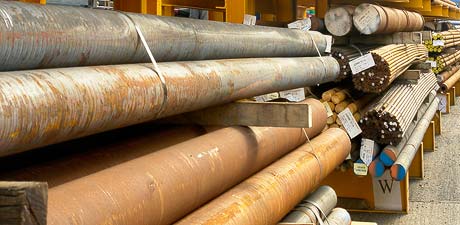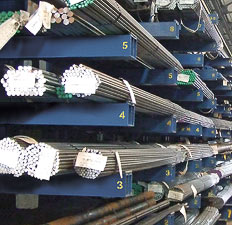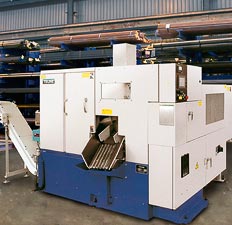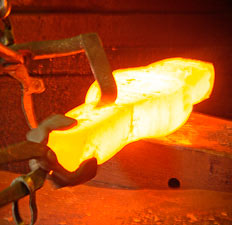Technical Data
Metallurgical Terms
Permanent Extension.
(See Permanent Set).
Permanent Set.
(a) An extension remaining after the load has been removed from a test piece when the elastic limit has been exceeded (see Elastic Limit).
(b) Permanent deflection of any structure after being subjected to a load.
pH Value.
A method of expressing differences in the acidity or alkalinity of solutions. It is the logarithm to the base 10 of the reciprocal of the concentration of the hydrogen ions in gram molecules per litre in an aqueous solution. Thus, water has a pH value of 7; acidic solutions are less than 7, and basic solutions are higher than 7.
Phase Diagram.
(Thermal Equilibrium Diagram). A graph showing the limits of composition and temperature of the various phases present in an alloy system under equilibrium conditions. A phase is the name given to a constituent which can be distinguished from the remainder of an alloy by physical and chemical methods such as etching, and in the solid may be a solid solution, an element or an inter-metallic compound.
Photomicrograph.
A photographic reproduction of a microstructure.
Pickling.
The process of chemically removing scale or oxide from metal objects to obtain a chemically clean surface. This is usually effected by immersion in an acid bath. For steel, the acids generally employed are sulphuric and hydrochloric to which is added an inhibitor of organic material such as glue in small quantities, often about 0.05%, or slightly more, to reduce or restrain the attack of the acid on the metal and so effect the removal of the scale with a minimum loss of metal. Inhibitors may be of a foaming or non-foaming type, the object of the former being to produce a blanket of foam on the surface of the pickling bath with the object of reducing acid spray caused by the bursting of bubbles of hydrogen at the surface. Scale may also be removed by molten caustic soda baths with additions of sodium hydride or other compounds. This treatment is followed by water quenching and if required a brief acid dip. Materials otherwise difficult to pickle may often be rapidly and efficiently descaled in this way.
Pig.
A mass of metal (e.g., cast iron, copper or lead) cast in a simple shape for transportation or storage, and subsequently remelted for purification, alloying or casting into final shape, or into ingots for rolling.
Pig Iron.
Crude iron produced by the reduction of iron ore in a blast furnace and cast into pigs which are used for making steel or cast iron. The principal impurities are carbon from 2.5 to 5%, and varying amounts of silicon, manganese, sulphur and phosphorus. The composition varies according to the type of ore, smelting practice, and the purpose for which the iron is to be used.
Pinch Pass.
(See Skin Pass).
Pipe.
An axial cavity produced in the ingot by the contraction of the metal on freezing. When the pipe is in the top or open part of the ingot it is known as primary pipe and when it appears in the lower part it is described as secondary pipe.
Pitting Corrosion.
Passive metals are resistant to a wide variety of corrosive media but under certain conditions breakdown of the passive film may occur at various points. Depending on the conditions, this may lead to a complete breakdown of the passive film or the attack may concentrate at these initial areas, leading to pitting.
Plain Carbon Steel.
(See Carbon Steel).
Plasma.
Gas heated to a very high temperature and confined so that the constituent molecules break down into electrically charged particles of high energy. It is formed in the electric arc and if suitably confined and directed by electromagnetic means can be used as a source of intense heat. Temperatures up to 17,000°C may be obtained. The plasma arc can be used for spraying metals and ceramics, or for metal cutting and welding.
Plastic Flow.
The deformation of metals by the mechanism of slip along definite geometric planes within the crystals.
- < Previous
- 1
- 2
- 3
- Next >


